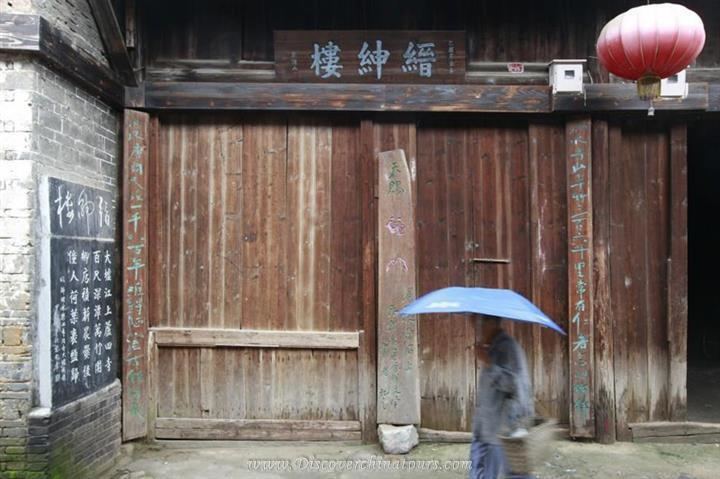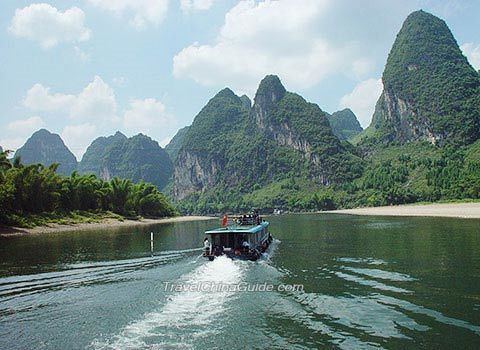Country China Population 4,747,963 | Area 27,809 km2 | |
 | ||
Points of interest Colleges and Universities Guilin University of Technology, Guangxi Normal University, Guilin University of Electronic Technology, Guilin Medical University | ||
Map of Guilin
Guilin, formerly romanized as Kweilin, is a prefecture-level city in the northeast of China's Guangxi Zhuang Autonomous Region. It is situated on the west bank of the Li River and borders Hunan to the north. Its name means "Forest of Sweet Osmanthus", owing to the large number of fragrant sweet osmanthus trees located in the city. The city has long been renowned for its scenery of karst topography and is one of China's most popular tourist destinations.
Contents
- Map of Guilin
- Things to do in guilin and yangshuo top attractions travel guide
- History
- Administrative divisions
- Geography
- Climate
- Demographics
- Economy
- Air
- Rail
- Urban
- Public colleges and universities
- Cuisine
- Quotes
- Twin townsSister cities
- A tour around guilin china at night including night markets street food pagodas and lakes
- References

Things to do in guilin and yangshuo top attractions travel guide
History

In 314 BC, a small settlement was established along the banks of the Li River.

During the Qin Dynasty's (221–207 BC) campaigns against the state of Nanyue, the first administration was set up in the area around Guilin.
In 111 BC, during the reign of Emperor Wu of the Han Dynasty, Shi An County was established, which could be regarded as the beginning of the city.
In AD 507, the town was renamed Guizhou.
Guilin prospered in the Tang and Song dynasties but remained a county. The city was also a nexus between the central government and the southwest border, and it was where regular armies were placed to guard that border. Canals were built through the city so that food supplies could be directly transported from the food-productive Yangtze plain to the farthest southwestern point of the empire.
In 1921, Guilin became one of the headquarters of the Northern Expeditionary Army led by Sun Yat-sen.
In 1940, the city acquired its present name.
In 1981, Guilin was listed by the State Council as one of the four cities (the other three being Beijing, Hangzhou and Suzhou) where the protection of historical and cultural heritage, as well as natural scenery, should be treated as a priority project.
Administrative divisions
Guilin administers seventeen county-level divisions, including six districts, nine counties and two autonomous counties.
Geography
Guilin is located in northern Guangxi, bordering Liuzhou to the west, Laibin to the southwest, Wuzhou to the south, Hezhou to the southeast, and within neighbouring Hunan, Huaihua to the northwest, Shaoyang to the north, and Yongzhou to the east. It has a total area of 27,809 square kilometres (10,737 sq mi). The topography of the area is marked by karst formations. The Li River flows through the city.
Climate
Guilin has a monsoon-influenced humid subtropical climate (Köppen Cfa), with short, mild winters, and long, hot, humid summers. Winter begins dry but becomes progressively wetter and cloudier. Spring is generally overcast and often rainy, while summer continues to be rainy though is the sunniest time of year. Autumn is sunny and dry. The monthly 24-hour average temperature ranges from 7.9 °C (46.2 °F) in January to 28.0 °C (82.4 °F) in July, and the annual mean is 18.84 °C (65.9 °F). The annual rainfall is just above 1,900 mm (75 in), and is delivered in bulk (~50%) from April to June, when the plum rains occur and often create the risk of flooding. With monthly percent possible sunshine ranging from 14% in March to 53% in September, the city receives 1,487 hours of bright sunshine annually.
Demographics
Economy
Until 1949 only a thermal power plant, a cement works, and some small textile mills existed as signs of industrialization in Guilin. However, since the 1950s Guilin has electronics, engineering and agricultural equipment, medicine, rubber, and buses, and it also has textile and cotton yarn factories. Food processing, including the processing of local agricultural produce, remains the most important industry. More recent and modern industry feature high technology and the tertiary industry characterized by tourism trading and service.
Air
The airport is Guilin Liangjiang International Airport. Airlines that fly to the airport are:
Rail
Guilin Main Train Station and Guilin North Train Station are on the Hunan–Guangxi Railway, Hengyang-Liuzhou High-Speed Railway and Guiyang–Guangzhou High-Speed Railway, the main railways connecting Guangxi with central and southern China. Arriving to North Station, high-speed trains between Guilin and Changsha and Beijing came into operation in December 2013. In December 2014, high-speed operations began connecting Guangzhou, Shenzhen, Guiyang, and Shanghai. This made it more convenient for people to come to Guilin. It takes only about 2 or 3 hours from Guangzhou to Guilin, 9 hours from Shanghai to Guilin and 13 hours from Beijing to Guilin.
Urban
The city's public transportation includes bus routes and taxis. Guilin is the leading city in Mainland China operating double-decker buses regularly on major routes; in its main street the double-deckers run one-by-one almost every minute. Sightseeing boats also run on the city's canals and lakes.
Public colleges and universities
Note: Institutions without full-time bachelor programs are not listed.
Scenic spots around Guilin include:
Cuisine
Guilin cuisine is a mixture of Cantonese cuisine and Zhuang cuisine. It is known for its snacks and the use of spices, especially chili. Guilin chili sauce (桂林辣椒酱), used widely in cooking by locals, is made of fresh chili, garlic, and fermented soybeans, and is considered one of the city's Three Treasures (桂林三宝). The other two of the Three Treasures are Guilin Sanhua Jiu (桂林三花酒), a variety of rice baijiu, or liquor distilled from rice; and Guilin pickled tofu.
Guilin rice noodles have been the local breakfast staple since the Qin dynasty and are renowned for their delicate taste. Legend has it that when Qin troops suffering from diarrhea entered this region, a cook created the Guilin rice noodles for the army because they had trouble eating the local food. Specifically, the local specialty is noodles with horse meat, but this dish can also be ordered without the horse meat. Zongzi, a dumpling made from glutinous rice and mung bean paste wrapped in a bamboo or banana leaf is another popular delicacy in Guilin.
Quotes
"I often sent pictures of the hills of Guilin which I painted to friends back home, but few believed what they saw.""Guilin's scenery is best among all under heaven." (Chinese: 桂林山水甲天下; pinyin: Guìlín shānshuǐ jiǎ tiānxià)- popular Chinese sayingTwin towns—Sister cities
Guilin is twinned with:
The Guilin relationship with the New Zealand city Hastings started in 1977, after a research scientist, Dr Stuart Falconer identified a number of common areas of interest between the two cities, including horticulture and their rural-urban mix. In 1997 Guilin commenced an exchange relationship with Ōta, Gunma, Japan.
